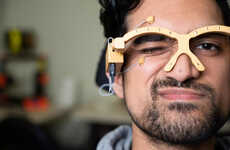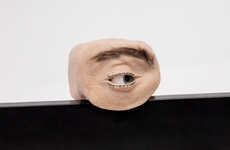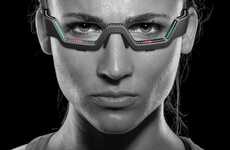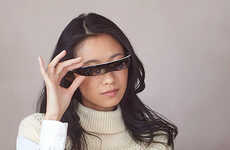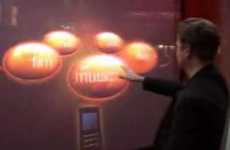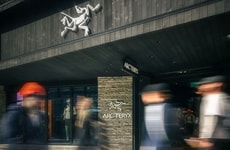
Philips Windows Know Where You Look
References: wipo.int & technology.newscientist
Philips, the electronics company, has invented and patented a way to track the gazes of window shoppers. The tracker can determine what item is being looked at, then larger pictures, slideshows, or more information is displayed on nearby screens.
At least one detector will be configured to detect the gaze of shoppers. A processor can then calculate how long someone looked at a particular item. It then identifies the most looked at items and even how often longing gazes were directed on a particular object. The invention could also be used at art galleries and museums for delivering visitor specific information.
At least one detector will be configured to detect the gaze of shoppers. A processor can then calculate how long someone looked at a particular item. It then identifies the most looked at items and even how often longing gazes were directed on a particular object. The invention could also be used at art galleries and museums for delivering visitor specific information.
Trend Themes
1. Gaze Tracking Technology - Opportunity for businesses to develop innovative gaze tracking solutions that enhance customer engagement and personalize content.
2. Interactive Retail Displays - Disruptive innovation potential lies in creating interactive displays with real-time information based on customer gazes to drive sales and provide a personalized shopping experience.
3. Visitor Analytics - Utilizing gaze assessment technology in art galleries and museums to analyze visitor behavior and deliver targeted information for a more immersive experience.
Industry Implications
1. Electronics - Electronics companies can explore integrating gaze tracking technology into their devices for consumer applications such as smart TVs, laptops, and smartphones.
2. Retail - Retailers can leverage gaze tracking technology to design captivating in-store displays and analyze customer preferences for targeted marketing and improving store layouts.
3. Art and Culture - Art galleries and museums can adopt gaze assessment technology to gain insights into visitor behavior, enhance exhibits, and provide personalized information for a more engaging experience.
4.1
Score
Popularity
Activity
Freshness





